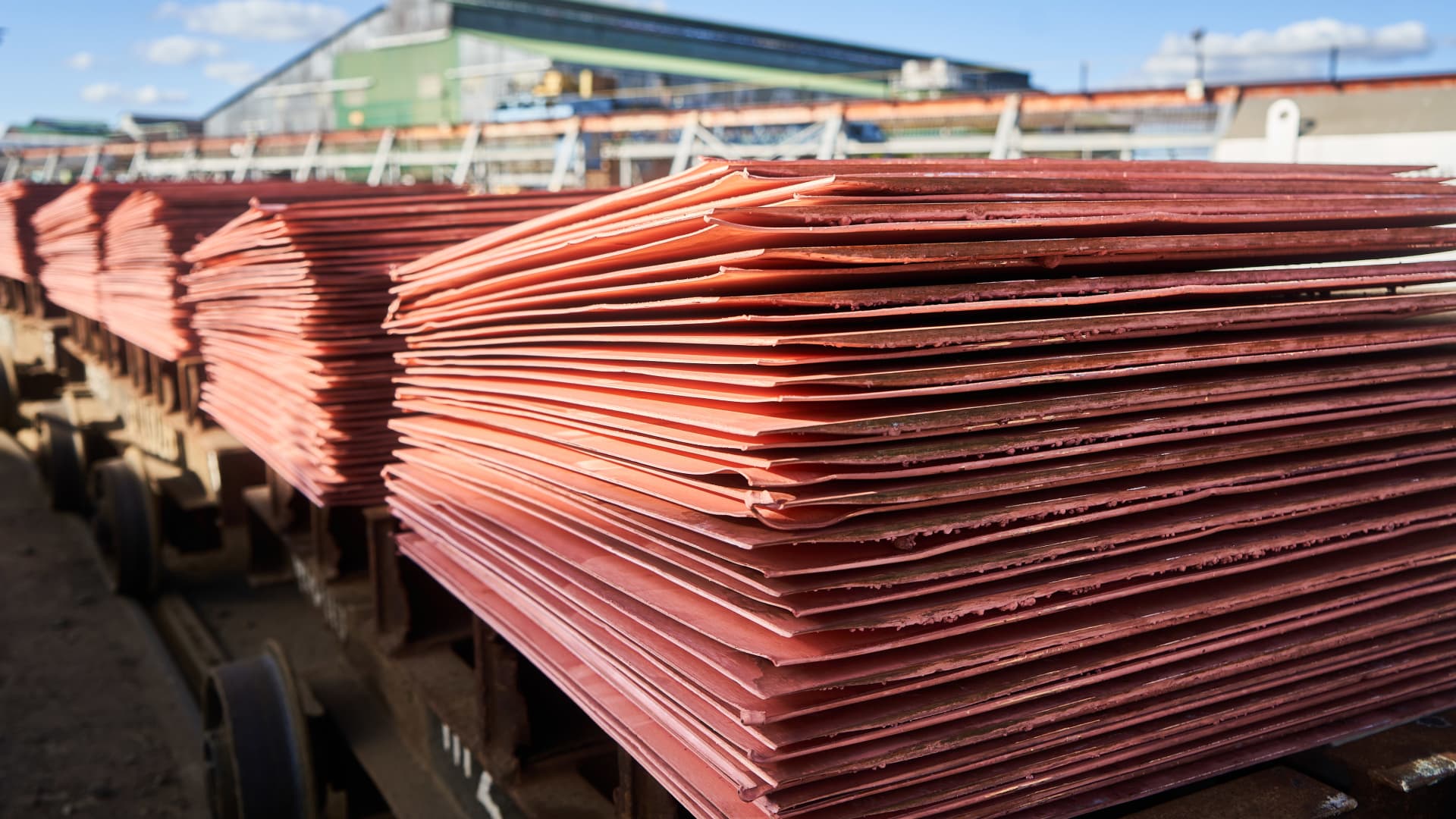Copper plates on wagons ready for onward shipping at the Mufulira refinery, operated by Mopani Copper Mines Plc, in Mufulira, Zambia, on Friday, May 6, 2022.
Bloomberg | Bloomberg | Getty Images
KoBold Metals, a mining startup backed by billionaires including Bill Gates and Jeff Bezos, is bullish on the discovery potential of some of the most sought-after energy transition metals.
It comes shortly after the Silicon Valley-based metals exploration company announced the rare discovery of a vast copper deposit in Zambia.
Josh Goldman, president of KoBold Metals, told CNBC that the firm’s investors were thrilled by the discovery, particularly at a time when the mining industry is struggling to keep pace with a metals-intensive energy transition.
“They are feeling delighted about this news because this is what we set out to do. The point of the company is to discover, find and develop mineral resources that we need for the energy transition,” Goldman said via videoconference.
“This is the first major win for the company, and it is among the most extraordinary ore bodies in the world,” he added.
KoBold Metals says it uses artificial intelligence to create a “treasure map” to help find new deposits of materials such as copper, lithium, cobalt and nickel. The company currently has more than 60 exploration-stage projects across several countries.
The point of the company is to be serially successful in exploration  and to improve exploration success overall and to decrease the capital intensity of discovery.
Josh Goldman
President of KoBold Metals
The startup’s investors include U.S. venture capital firm Andreessen Horowitz, Norwegian energy giant Equinor, the world’s largest mining group BHP, and Breakthrough Energy, a climate and technology fund founded by Bill Gates in 2015.
Breakthrough Energy’s backers include Bridgewater Associates’ Ray Dalio, Virgin Group’s Richard Branson, Alibaba’s Jack Ma and Amazon’s Jeff Bezos.
KoBold Metals is now focusing on advancing its Mingomba project in Zambia, which it expects to start producing copper within 10 years, and discovering the next trove of critical minerals, according to Goldman.
“The Central African copper belt is the part of the world where you can find things of this extraordinary grade. And that’s why we are there. The geology is extraordinary,” he said.
“It is not just that there haven’t been deposits like this. It’s that there are more to be found. Here is Mingomba  and then where is the next Mingomba after this? This is the part of the world and style of deposit where we can find resources of this scale and quality, and Zambia provides an operating environment that is really extraordinary,” he added.
Copper is in high demand due to its use in renewable energy infrastructure, energy storage systems and electric vehicles. Zambia is Africa’s second-largest copper producer after the Democratic Republic of the Congo.
‘The potential for discovery is great’
KoBold Metals said that most copper currently being mined has an ore grade of around 0.6%, whereas its Mingomba deposit has copper ore grades of more than 5%.
“That means that you have to mine a lot less rock in order to get the same amount of copper,” Goldman said.
“For a 0.5% ore deposit, you have to mine 200 kilograms of rock to get 1 kilogram of copper. For a 5% ore deposit, you have to mine 20 kilograms of rock to get 1 kilogram of copper. So, that’s a lot less Earth that you have to disturb, that’s a lot less waste that you create.”
Workers monitor electrolytic baths at the Mufulira refinery, operated by Mopani Copper Mines Plc, in Mufulira, Zambia, on Friday, May 6, 2022.
Bloomberg | Bloomberg | Getty Images
Goldman said KoBold Metals plans to list shares publicly in the next three to four years.
“We do expect in due course that being a public company is likely going to be the best way to finance the business,” he added.
“The point of the company is to be serially successful in exploration  and to improve exploration success overall and to decrease the capital intensity of discovery,” Goldman said. “We think the potential for discovery is great. There is a lot more to be found in Zambia.”
Read the original article here


